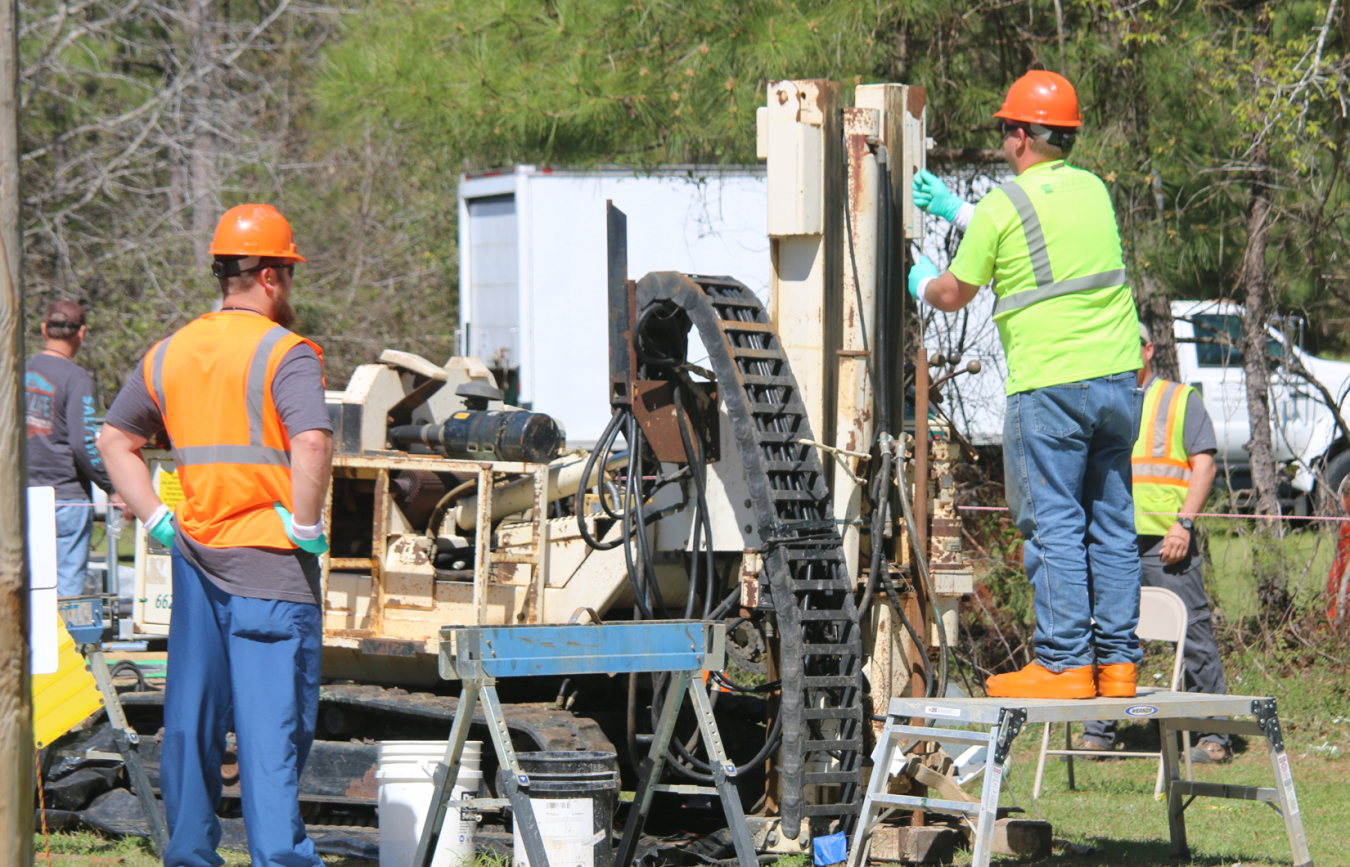The EM program at the Savannah River Site (SRS) has launched an innovative process using silver chloride, a conventional industrial product.
Office of Environmental Management
September 3, 2019
AIKEN, S.C. – The EM program at the Savannah River Site (SRS) has launched an innovative process using silver chloride, a conventional industrial product, to clean up contaminated groundwater.
The goal is to indefinitely immobilize the contaminant iodine-129 underground near its original source through the cleanup process developed by SRS management and operations contractor Savannah River Nuclear Solutions (SRNS).
“In this case, the silver lining is silver chloride, a common industrial product,” SRNS Engineer Jeff Thibault said. “It can capture and lock into place a high percentage of the iodine nuclides, reducing the amount of contamination in the groundwater within our treatment zone.”
The silver chloride is milled to create ultra-fine particles with highly irregular edges, which greatly increases the surface area of the particles. The material is mixed with water and injected into the water table 30 to 60 feet below surface. A total of 240,000 gallons of water and 165 gallons of silver chloride were used.
“Working with Savannah River National Laboratory scientists and geologists, we’ve found that over a short time period the silver chloride can permanently bind with the dissolved iodine-129, becoming silver iodide, which is an immobile solid,” Thibault said.
Extensive studies confirmed up to a 50-percent reduction in iodine-129 where silver chloride was injected beneath a portion of the site during pilot and field tests.
One of the most impressive aspects of this cleanup technology is that no waste is generated and no power is required, DOE-Savannah River Physical Scientist Philip Prater said.
“The reduction in operation and maintenance costs with this passive technique versus more traditional environmental cleanup methods is significant,” Prater said. “Employing more sustainable methods of corrective action helps SRS achieve its environmental remediation objectives, while reducing overall cleanup costs.”

